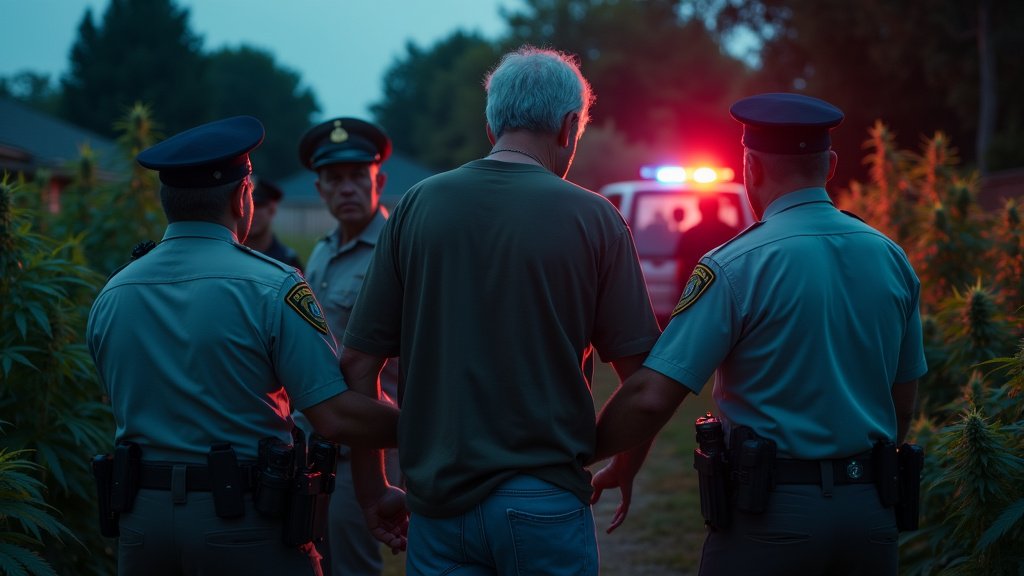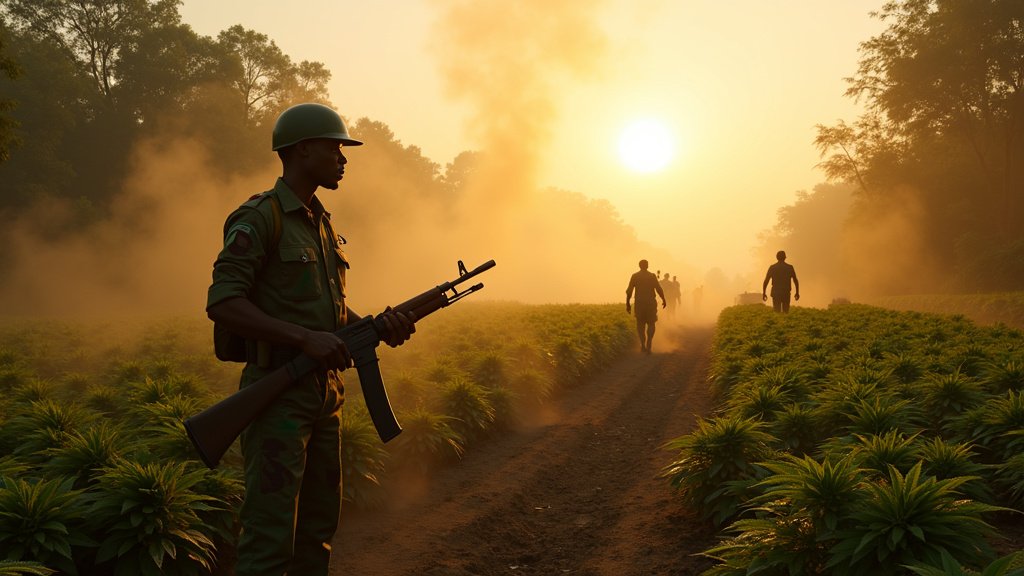How to Germinate Cannabis Seeds: A Comprehensive Guide
Germinating cannabis seeds is a crucial first step in growing healthy and productive cannabis plants. This guide covers everything you need to know about the different types of cannabis seeds, the germination process, and tips for successful cultivation.
Introduction
Germinating cannabis seeds marks the beginning of a fascinating journey from seed to harvest. Understanding the intricacies of this initial stage can significantly influence the health and yield of your plants. In this comprehensive guide, we’ll explore various germination methods, types of cannabis seeds, and expert tips for achieving optimal results.
Table of Contents
| Heading | Sub-topics |
|---|---|
| Understanding Cannabis Seeds | Types of Cannabis Seeds, Indica vs. Sativa vs. Hybrid, Regular vs. Feminized Seeds, Autoflowering Seeds, CBD and THC Seeds |
| Preparing for Germination | Selecting Quality Seeds, Proper Storage of Seeds, Ideal Environmental Conditions, Necessary Supplies |
| Germination Methods | The Paper Towel Method, Soaking in Water, Direct Soil Planting, Using Rockwool Cubes, Germination Stations |
| Step-by-Step Germination Process | Preparing the Seeds, Setting Up the Germination Environment, Monitoring the Process, Transplanting Seedlings |
| Common Germination Issues and Solutions | Seeds Not Sprouting, Mold and Fungal Growth, Incorrect Moisture Levels, Temperature Problems |
| Caring for Seedlings Post-Germination | Proper Light Conditions, Watering Techniques, Nutrient Requirements, Transplanting Seedlings to Larger Pots |
| Advanced Germination Techniques | Using Cloning Gels, Hormone Treatments, Scarification Techniques, Stratification Methods |
| Legal Considerations | Legality of Germinating Cannabis Seeds, Compliance with Local Laws, Obtaining Seeds Legally |
| FAQs | Frequently Asked Questions on Germinating Cannabis Seeds |
Understanding Cannabis Seeds
Types of Cannabis Seeds
Cannabis seeds come in various types, each with its unique characteristics and cultivation requirements. Understanding these differences is essential for selecting the right seeds for your growing goals.
Indica vs. Sativa vs. Hybrid
- Indica: Known for their relaxing effects and shorter, bushier plants.
- Sativa: Produces uplifting effects and grows taller with a longer flowering period.
- Hybrid: Combines traits of both Indica and Sativa, offering a balanced effect and versatile growth patterns.
Regular vs. Feminized Seeds
- Regular Seeds: Can produce both male and female plants. Useful for breeding but requires sexing to identify females.
- Feminized Seeds: Engineered to produce only female plants, ensuring that growers get the desired flowering plants without the need for sexing.
Autoflowering Seeds
- Autoflowering Seeds: These seeds transition from vegetative growth to flowering automatically, based on age rather than light cycle. Ideal for beginners and those looking for a quicker harvest.
CBD and THC Seeds
- CBD Seeds: High in cannabidiol (CBD) and lower in tetrahydrocannabinol (THC), these seeds are preferred for therapeutic uses.
- THC Seeds: High in THC, offering strong psychoactive effects. Popular among recreational users.
Preparing for Germination
Selecting Quality Seeds
Quality seeds are vital for successful germination. Look for seeds that are:
- Dark brown with a glossy finish.
- Firm to the touch.
- Free from cracks or damage.
Proper Storage of Seeds
Store seeds in a cool, dark, and dry place to maintain their viability. Use airtight containers and consider refrigeration for long-term storage.
Ideal Environmental Conditions
Seeds require specific conditions to germinate:
- Temperature: 70-85°F (21-29°C).
- Humidity: Around 70%.
- Darkness: Seeds germinate best in dark environments.
Necessary Supplies
Gather the following supplies for the germination process:
- Paper towels.
- Clean water.
- Germination station or humidity dome.
- Planting medium (soil, Rockwool cubes, etc.).
Germination Methods
The Paper Towel Method
- Preparation: Moisten two paper towels with clean water.
- Placement: Place seeds between the towels.
- Storage: Place the towels in a plastic bag or between two plates to retain moisture.
- Environment: Keep in a warm, dark place.
- Monitoring: Check daily and re-moisten as needed until roots appear.
Soaking in Water
- Preparation: Fill a glass with water at room temperature.
- Placement: Drop seeds into the water.
- Duration: Allow seeds to soak for 24-48 hours.
- Result: Seeds that sink are viable and ready for planting.
Direct Soil Planting
- Preparation: Fill small pots with a light, airy soil mix.
- Planting: Place seeds ¼ inch deep in the soil.
- Watering: Moisten the soil without drenching it.
- Environment: Keep pots in a warm, dark place until sprouts emerge.
Using Rockwool Cubes
- Preparation: Soak Rockwool cubes in pH-balanced water.
- Placement: Insert seeds into the cubes.
- Environment: Place cubes in a germination station or under a humidity dome.
- Monitoring: Keep moist and check daily for sprouting.
Germination Stations
- Setup: Prepare a germination station with heat and humidity control.
- Placement: Place seeds in the provided medium (soil, Rockwool, etc.).
- Environment: Maintain optimal temperature and humidity.
- Monitoring: Regularly check for signs of sprouting and adjust conditions as needed.
Step-by-Step Germination Process
Preparing the Seeds
- Inspect seeds for quality.
- Pre-soak seeds in water if using the soaking method.
Setting Up the Germination Environment
- Ensure the environment is warm (70-85°F) and humid (around 70%).
- Use a germination station or create a makeshift humidity dome.
Monitoring the Process
- Check seeds daily for signs of sprouting.
- Maintain moisture levels without waterlogging.
- Adjust temperature and humidity as necessary.
Transplanting Seedlings
- Once roots are ½ inch long, transplant seedlings to a growing medium.
- Handle seedlings gently to avoid damaging the delicate roots.
Common Germination Issues and Solutions
Seeds Not Sprouting
- Cause: Poor seed quality or incorrect conditions.
- Solution: Use fresh, high-quality seeds and ensure optimal temperature and humidity.
Mold and Fungal Growth
- Cause: Excess moisture and poor air circulation.
- Solution: Maintain proper moisture levels and ensure good ventilation.
Incorrect Moisture Levels
- Cause: Overwatering or underwatering.
- Solution: Keep the medium moist but not soaked; check daily and adjust as needed.
Temperature Problems
- Cause: Environment too hot or too cold.
- Solution: Use a heat mat or move to a warmer location; avoid direct heat sources.
Caring for Seedlings Post-Germination
Proper Light Conditions
- Use fluorescent or LED grow lights.
- Provide 18-24 hours of light per day.
Watering Techniques
- Keep the soil moist but not waterlogged.
- Use a spray bottle for gentle watering.
Nutrient Requirements
- Start with a light nutrient solution once true leaves appear.
- Gradually increase nutrient strength as plants grow.
Transplanting Seedlings to Larger Pots
- Transplant when roots outgrow the initial container.
- Use a well-draining soil mix in the larger pots.
Advanced Germination Techniques
Using Cloning Gels
- Apply rooting hormone gel to seeds before planting to encourage faster root development.
Hormone Treatments
- Soak seeds in a solution of gibberellic acid to enhance germination rates.
Scarification Techniques
- Lightly scuff seed coats with sandpaper to promote water absorption.
Stratification Methods
- Pre-chill seeds in a refrigerator for a few weeks to break dormancy.
Legal Considerations
Legality of Germinating Cannabis Seeds
- Research local laws regarding cannabis cultivation.
- Ensure compliance with legal requirements.
Compliance with Local Laws
- Follow regulations on the number of plants and permitted growing conditions.
- Obtain necessary permits if required.
Obtaining Seeds Legally
- Purchase seeds from reputable, legal sources.
- Avoid acquiring seeds from illegal or unregulated suppliers.
FAQs
What is the best method for germinating cannabis seeds? The paper towel method is popular due to its simplicity and high success rate. However, other methods like soaking in water and using Rockwool cubes are also effective.
How long does it take for cannabis seeds to germinate? Germination typically takes 1-7 days, depending on the method used and environmental conditions.
Why are my cannabis seeds not germinating? Common reasons include poor seed quality, incorrect temperature, and improper moisture levels. Ensuring optimal conditions can improve germination rates.
Can I germinate cannabis seeds in soil? Yes, direct soil planting is a viable method. Ensure the soil is light, airy, and kept moist but not waterlogged.
What should I do if my seeds develop mold? Remove moldy seeds immediately and adjust moisture and ventilation levels to prevent further mold growth.
Is it legal to germinate cannabis seeds? Legality varies by location. Always research and adhere to local laws regarding cannabis cultivation.
To Conclude
Germinating cannabis seeds is a rewarding process that sets the stage for a successful growing experience. By understanding the different types of seeds, preparing the right environment, and choosing the appropriate germination method, you can ensure healthy and vigorous seedlings. Keep a close eye on your seeds during germination, address any issues promptly, and provide the right care to your seedlings as they grow. Happy growing!






